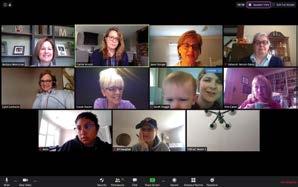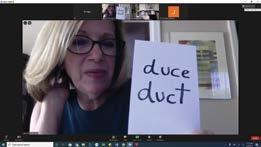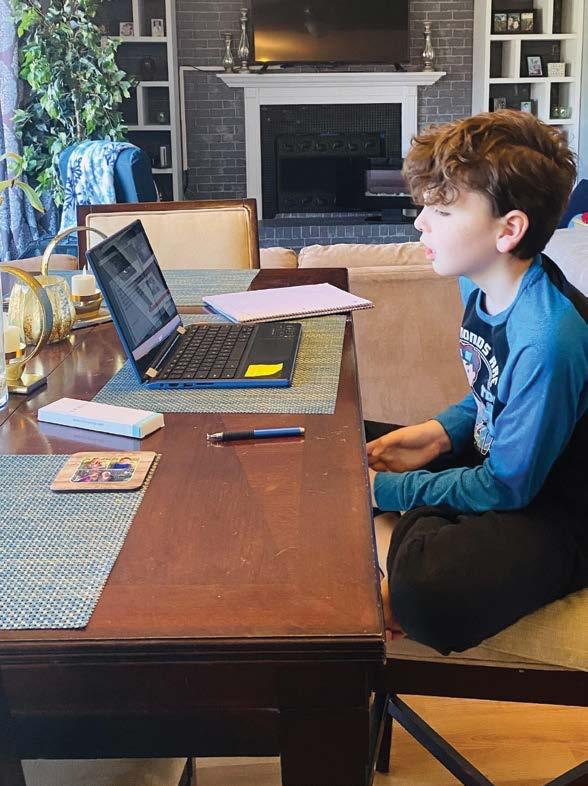
5 minute read
The Children’s Dyslexia Centers

RISING TO THE CHALLENGE The Children’s Dyslexia Centers’ Innovative Response to COVID-19
by Bridget Steele, Manager of Research and Grants
Noah begins a lesson with his tutor Martha by immediately getting to work. The next hour he tackles pronunciation, blending and decoding, and then spelling and reading. When he gets stuck spelling a word, Martha offers guidance to help him find the answer on his own.
“What’s the base of the word?” she asks him. “And then, is there a suffix? So then can you spell out the whole word?” The lesson ends with Noah reading from the book he’s been working his way through with Martha, The Wild Robot.
What’s remarkable about Noah’s lesson is that he and Martha aren’t in the same room or even in the same state. He’s just one of the hundreds of Children’s Dyslexia Center students whose one-on-one-tutoring lessons are being done virtually on Zoom.
Just a few months ago, the organization was scrambling to find a way to continue serving children when the COVID-19 pandemic forced Centers to close their doors. For Cathie Arnold, Director for the Children’s Dyslexia Center of Cincinnati, the initial closure felt surreal. “We ended up shutting down having no idea we wouldn’t be coming back. We just walked out. All of our supplies, our materials, everything was there,” she said.
Director of Operations Brother David Sharkis said, like many of us, COVID-19 took him by surprise. “The first week was really uncomfortable,” he said. “We were just reacting to what different states were doing. That’s when we made a conscious decision to be more proactive, take control of the situation, and put together a plan that would allow us to sustain the organization regardless of where COVID-19 took us.”
The first week was really uncomfortable.
A major hurdle they faced was maintaining the Centers’ high-quality dyslexia remediation services when stay at home orders prevented faceto-face tutoring sessions. Clinical Director Carin Illig and Associate Clinical Director Cindy Allen-Fuss worked tirelessly to come up with a solution. Ms. Illig and Ms. AllenFuss evaluated several online meeting platforms before settling on Zoom as the best solution. Then, leadership had to train Directors and staff to use the platform and to deliver virtual lessons.
“I actually ran through practice lessons with my daughter to try to figure out the best way to teach different components of the program. Then, I made videos and shared them with the Directors. It was a lot of brainstorming,” Ms. Allen-Fuss said.
Center Directors had to put in incredibly long hours to implement the new program. Cincinnati Director
INNOVATIVE RESPONSE TO COVID-19 continued
Below: Screen captures of a student and a teacher working together virtually via Zoom
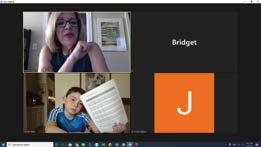
Cathie Arnold called the days leading up to the first week of virtual tutoring exhausting. “The Sunday before we went live, I met with every tutor, one on one for an hour. I started at 10 a.m. that Sunday and finished late in the evening. I wanted to go through the process of presenting the lesson slides with each practitioner individually so everyone felt prepared to get through that first lesson. Because of their hard work, we were able to begin online lessons the next day.”
By April 6, 2020, all of the Centers were up and running again, with 457 tutors teaching 822 students remotely, offering as many as 1,600 lessons a

week before moving into the summer months and a reduced schedule.
Brother Sharkis has been able to witness some of the sessions and has been amazed at how well the lessons have gone. “The animation and the excitement I’m seeing—it’s not just the kids, but the tutors as well. They are happy to see each other, they are happy to work together, and these kids are working really hard.”
Originally, the hope was that students would maintain their current progress levels and not regress. Instead, Center Directors have seen continued growth with many of their students, and some are unexpectedly enjoying the online
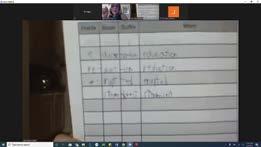
format. Ms. Arnold believes that the move to electronic lessons was an easy transition for students already comfortable with technology.
Some are unexpectedly enjoying the online format!
“It’s what they know. It’s the digital world that they live in that’s paralyzing to the tutors, but the students run with it, especially the older ones who navigate the keyboard well.” Just as encouraging, the response from parents has been overwhelmingly positive.

If you’d like to support the Children’s Dyslexia Centers in their work to provide free and affordable tutoring to children and families in need, you can donate your time as a volunteer tutor or provide monetary assistance. Learn more at childrensdyslexiacenters.org.
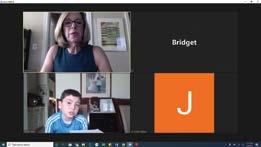
There are concerns that COVID-19 will have a long-term impact on CDC fundraising, but the situation has brought with it some unplanned advantages. Brother Sharkis said that individual Centers have really come together as one team. “The virtual face-to-face communication that Zoom has provided has led to unprecedented communication among Center Directors. I have Center Directors on a daily basis now sharing information, sharing tools, sharing tips,” he said.
Brother Sharkis remains optimistic about the future: “I am confident that the Children’s Dyslexia Centers, Inc. is going to come out of this a
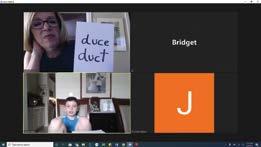
much stronger, technically adept organization. From the bottom of my heart, I thank all of our donors— particularly the Valleys and our
Virtual Staff Meeting
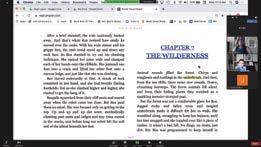
Scottish Rite Brothers whose efforts and generosity have made this possible. You are making a difference in the lives of these kids. Thank you.”
